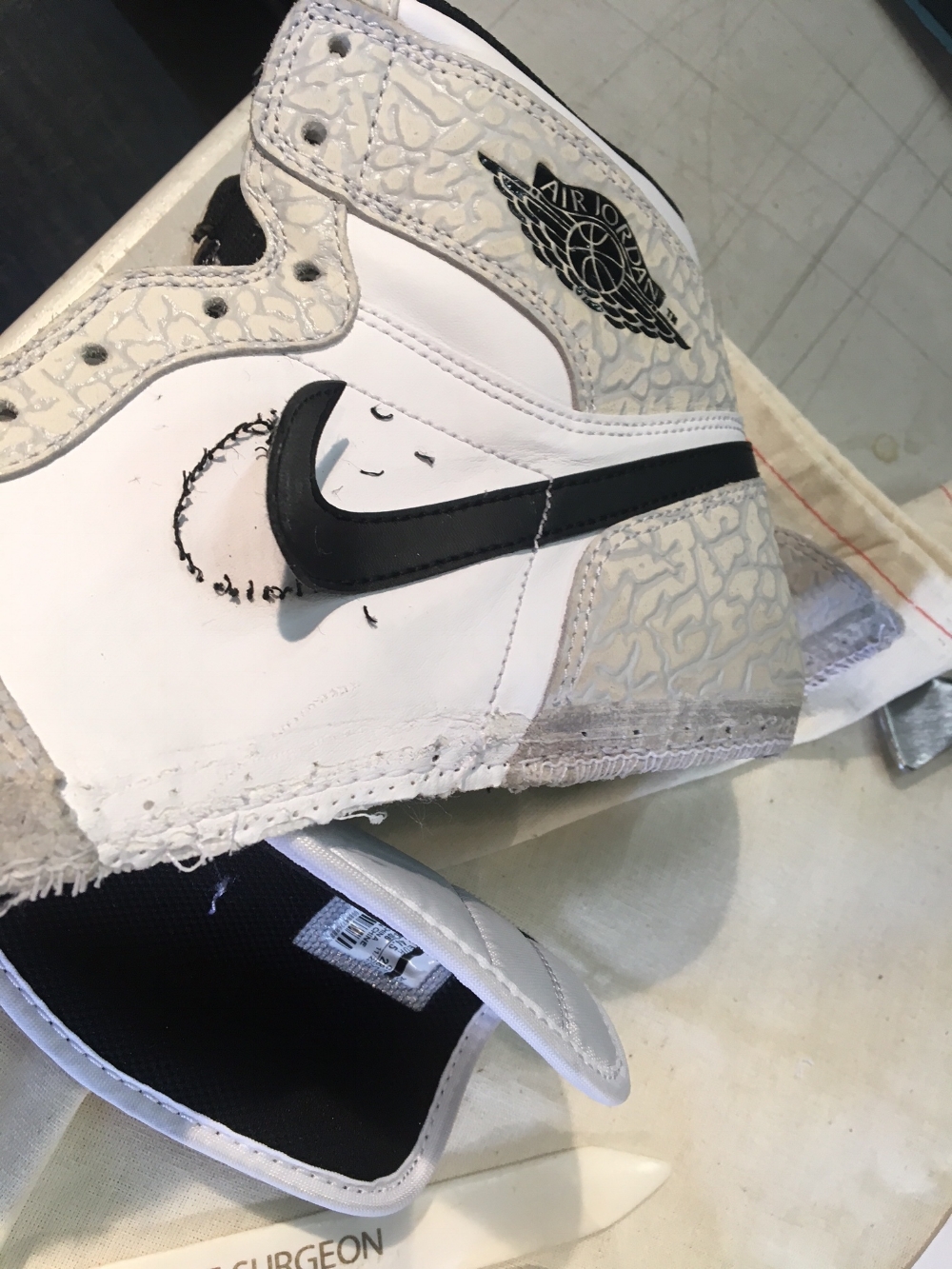After day 2, The Shoe Surgeon took our leathers to be skived. Skiving is the removal of leather to reduce the thickness. The overlapping pieces of leather were skived to fit together properly during bonding and stitching.
In Learning About: Flat Knitting, I researched traditional sewing and found this video that explain the sewing process nicely.
Sewing is all about repetition. I worked one stitch at a time on scrap pieces, until I felt comfortable to work on my pieces. A sewing machine engages everything: arms, legs, eyes and ears. The foot pedal, holding lining up the materials, listening to the hum of the machine.
After a few sloppy stitches, I started comparing my work to the one created by Nike on a high volume production line. Perfect lines sewed by a person with years of experience?
Mass Production Sewing
Should I start that row over? Should the stitches look exactly like the original? No. Our learning comes from making "mistakes".
Each stitch told the story of learning by doing. I am gaining confidence and building my custom creation, one stitch at a time.
UP NEXT - DAY 4 - More stitching/sewing and Lasting



















































